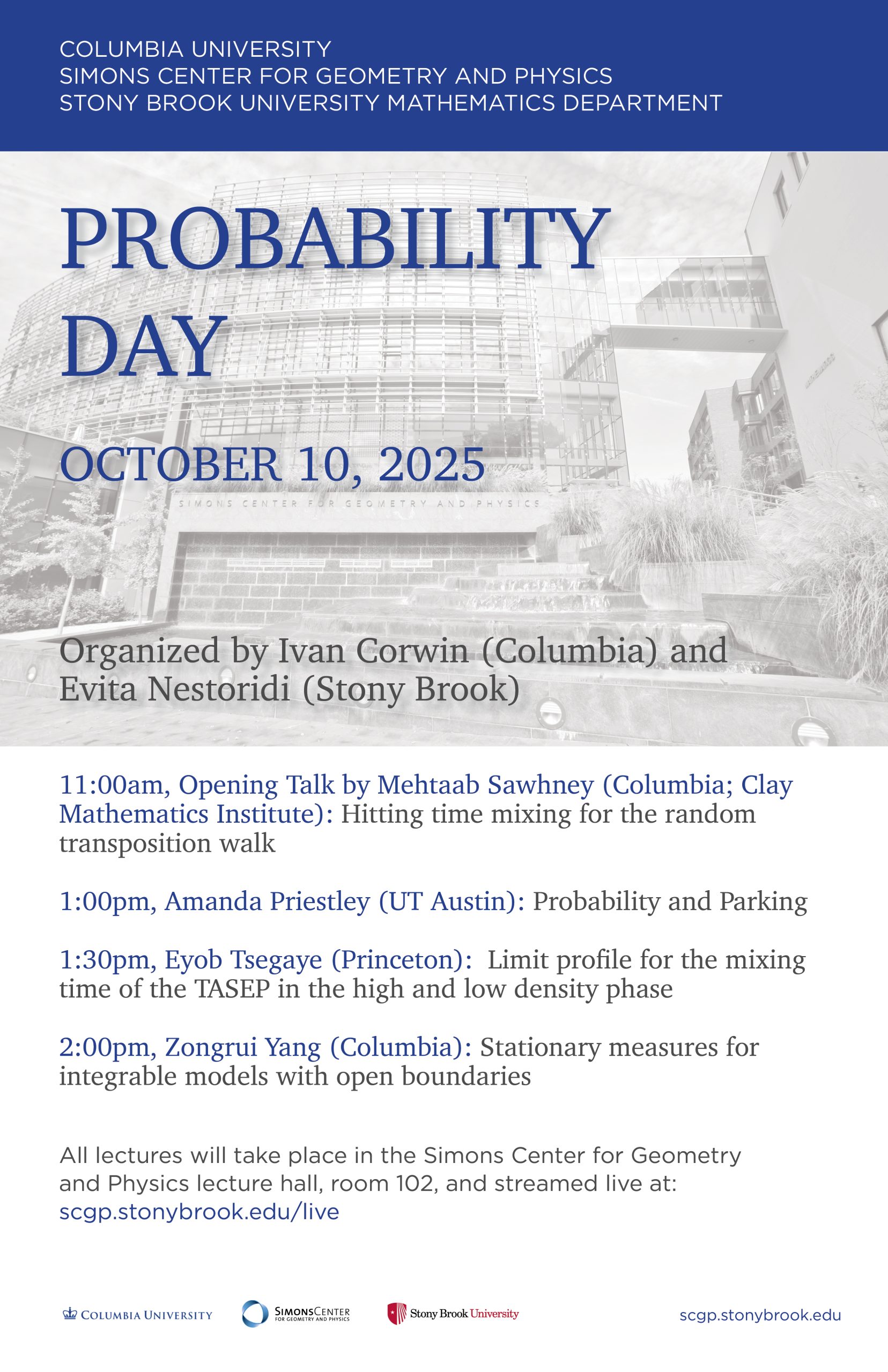Columbia University, Simons Center for Geometry and Physics, Stony Brook University Mathematics Department:
Probability Day
Organized by Ivan Corwin (Columbia) and Evita Nestoridi (Stony Brook)
*All talks will take place in SCGP Room 102*
Speaker: Mehtaab Sawhney (Columbia; Clay Mathematics Institute)
Title: Hitting time mixing for the random transposition walk
Abstract: Consider shuffling a deck of n cards, labeled 1 through n, as follows: at each time step, pick one card uniformly with your right hand and another card, independently and uniformly with your left hand; then swap the cards. How long does it take until the deck is close to random?
Confirming a conjecture of N. Berestycki, we prove the definitive “hitting time” version for the mixing of this shuffle. Let τ denote the first time at which all cards have been touched. The total variation distance between the stopped distribution at τ and the uniform distribution on permutations is o_n(1); this is best possible, since at time τ−1, the total variation distance is at least (1+o_n(1))/e. A key feature of this proof is to combine the representation theoretic inputs of Diaconis and Shahshahani with a physical space argument.
Based on joint work w. Vishesh Jain.
Speaker: Amanda Priestley (UT Austin)
Title: Probability and Parking
Speaker: Eyob Tsegaye (Princeton)
Title: Limit Profile for the Mixing Time of the TASEP in the High and Low Density Phase
The totally asymmetric simple exclusion process is a widely studied interacting particle system where particles hop to the right on a line according to independent rate 1 Poisson clocks, with the constraint that two particles cannot occupy the same space. We consider this process on a finite line segment of length N with open boundaries, so that particles can also enter from the left boundary and exit from the right. It was previously shown by Elboim and Schmid that under high and low density conditions, this process rapidly changes from unmixed to mixed in a critical time window around CN, where C is an explicit constant – the so-called cutoff phenomenon. We refine this statement to show the exact decay of the total variation distance within the critical time window. Along the way, we obtain an enlightening picture of how the process gradually mixes. This is based on ongoing work with Dominik Schmid.
Speaker: Zongrui Yang (Columbia)
Title: Stationary measures for integrable models with open boundaries
Abstract:
In this talk, I will discuss methods for studying the stationary measures of integrable models with open boundaries, with a particular focus on the open asymmetric simple exclusion process (ASEP). The approaches I will present draw on the matrix product ansatz, two-layer Gibbs measures, and Askey–Wilson orthogonal polynomials.


